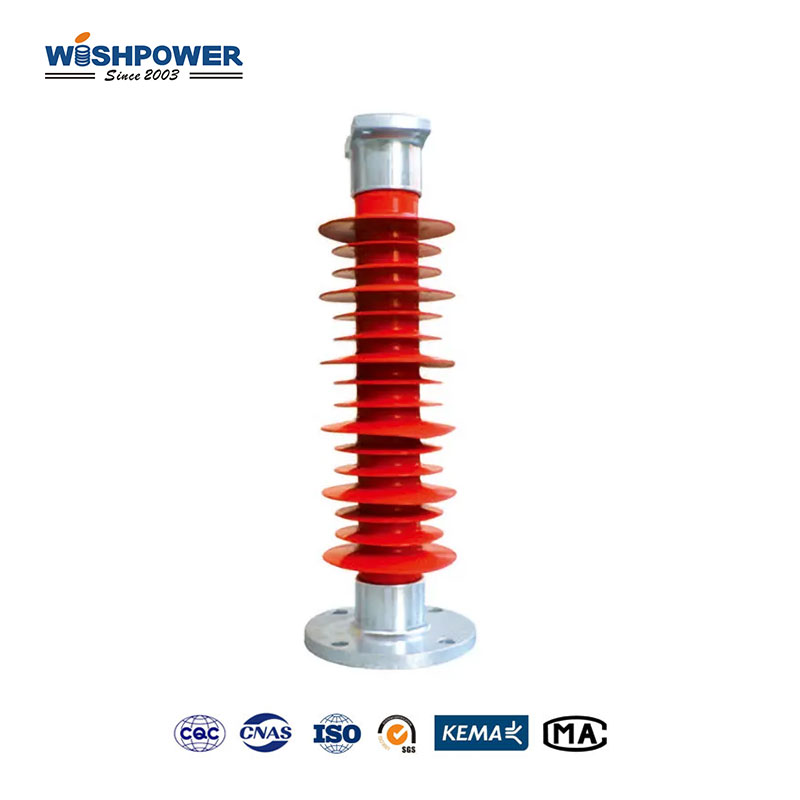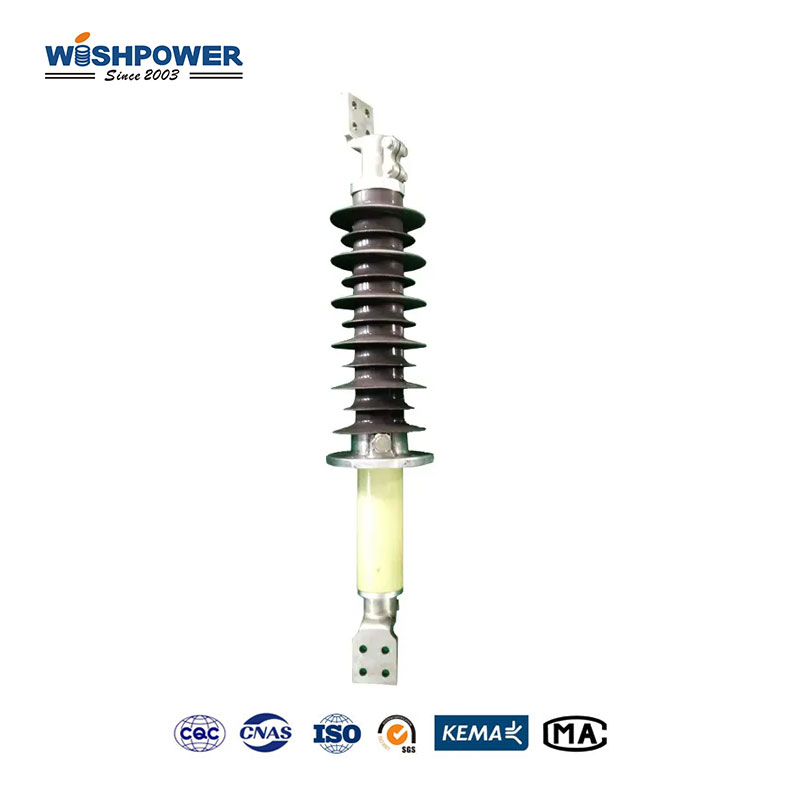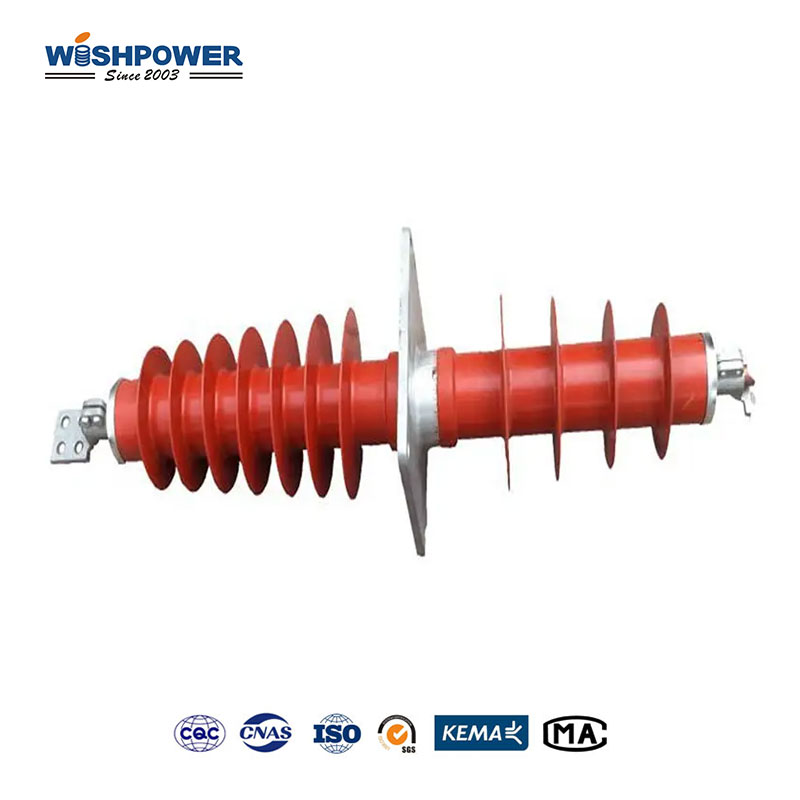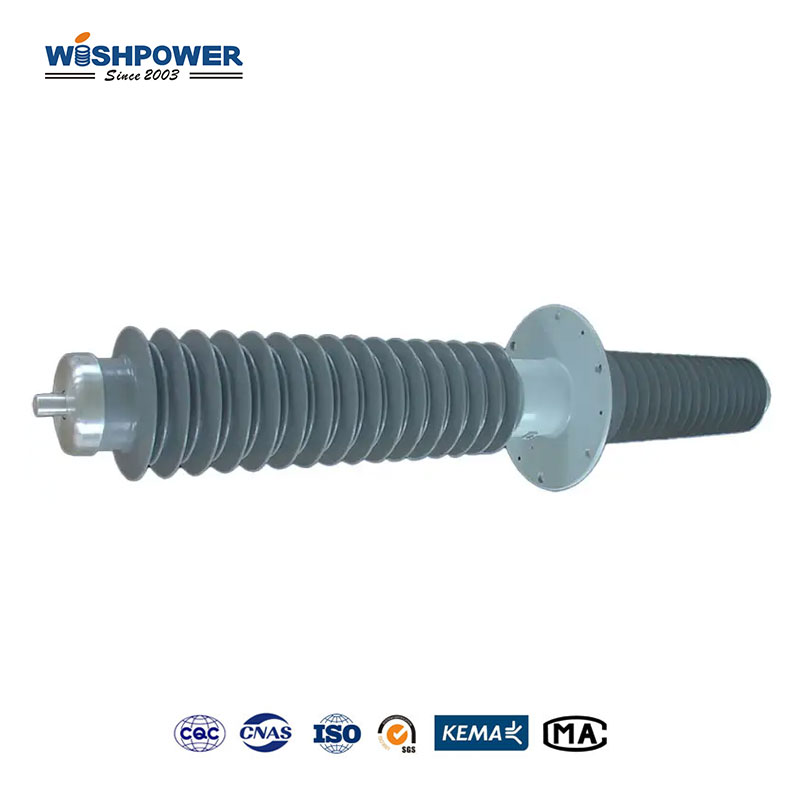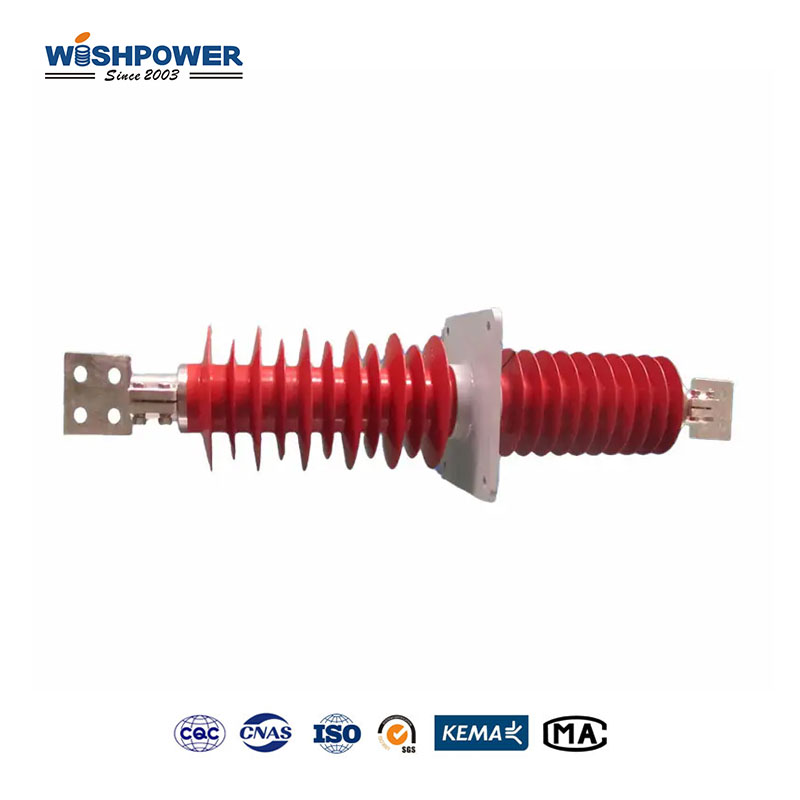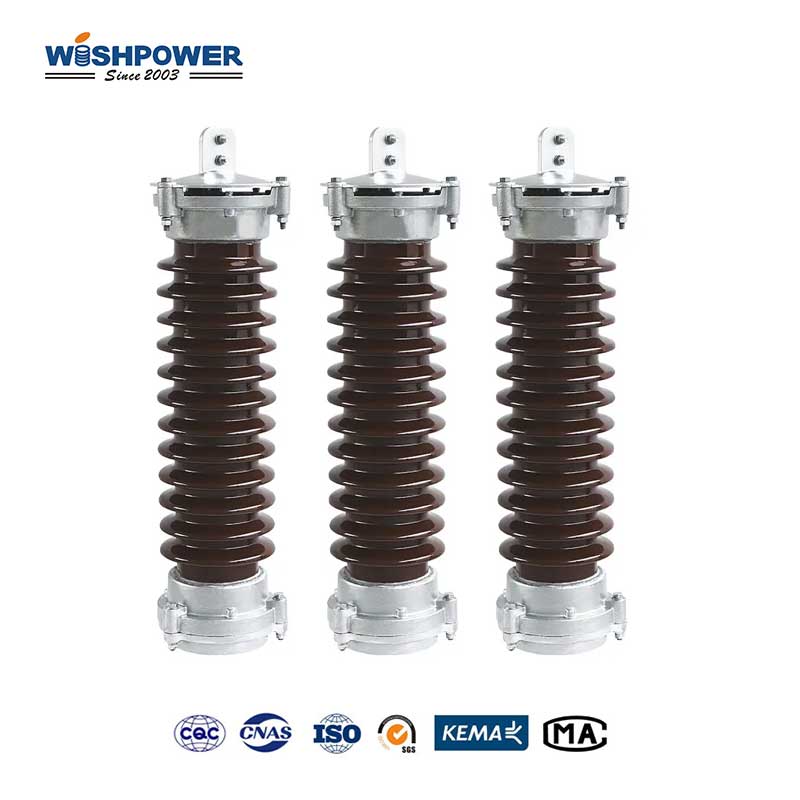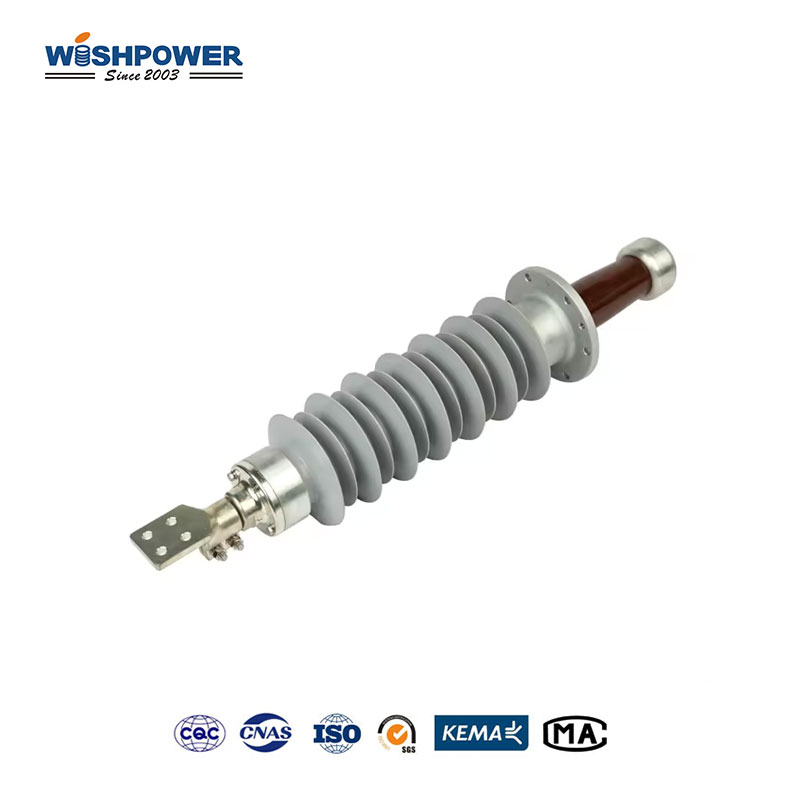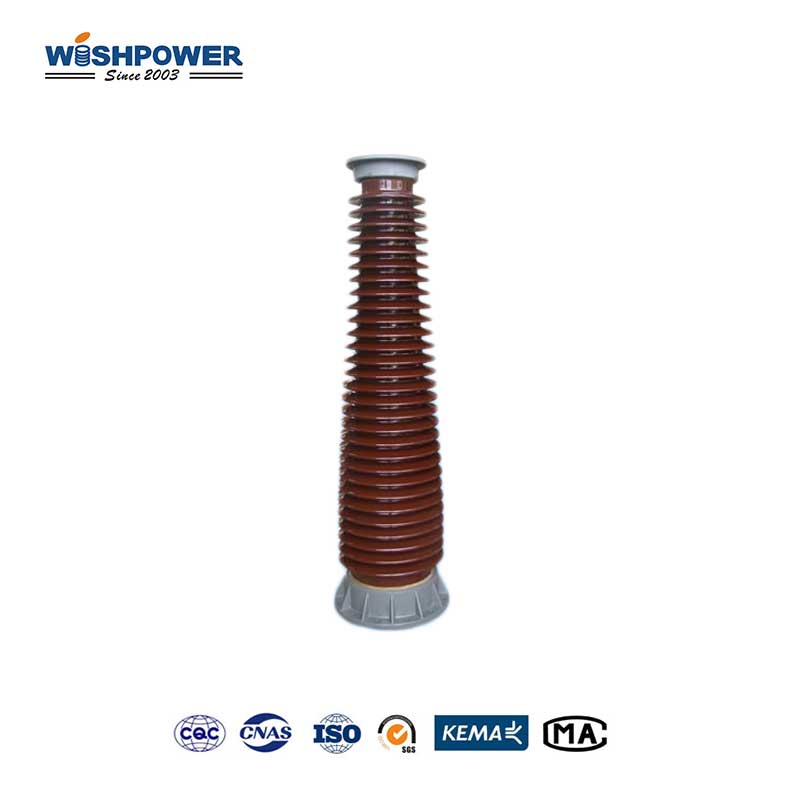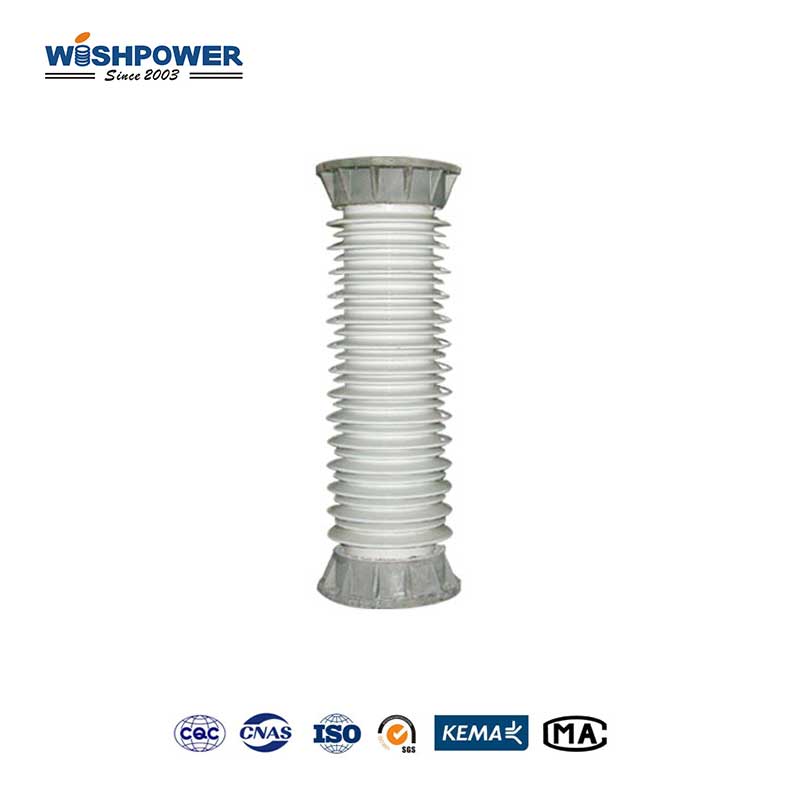Specification
| Type |
FXBW-500/160 |
| Rated voltage(KV) |
500 |
| Specified mechanical load |
160 |
| Section length(mm) |
4080 |
| Min Arc distance(mm) |
3730 |
| Leakage distance (mm) |
12750 |
| Lightning impulse withstand BIL(KV) |
2250 |
| Power frequency withstand(wet) (KV) |
740 |
The table above is just one of our product parameters. If you want more information, please get in touch with info@wishpower.net or download the file below.
What is Power Transformer Bushing?
Power transformer bushing is a crucial insulating component on a power transformer that lets the electrical current pass from the power transformer’s internal winding to its socket sides and ensures the safe operation of the power transformer. These bushings are installed at different positions of the transformer casing to withstand high voltage, prevent electrical leakage, and insulate the conductor from the grounded transformer housing. Generally fabricated from materials with high dielectric strength (e.g., composite polymers), ceramic micromotors are designed to withstand extreme electrical stress, mechanical forces, and environmental exposure. It has a key role in the transformer’s operating safety and efficiency, keeping conductive parts isolated and protected from defect and short circuit risks for uninterrupted power flow. In addition to their durable construction, they are also weatherproof and impervious to contamination, which increases reliability but lessens the frequency of operational demands in outdoor and industrial environments.
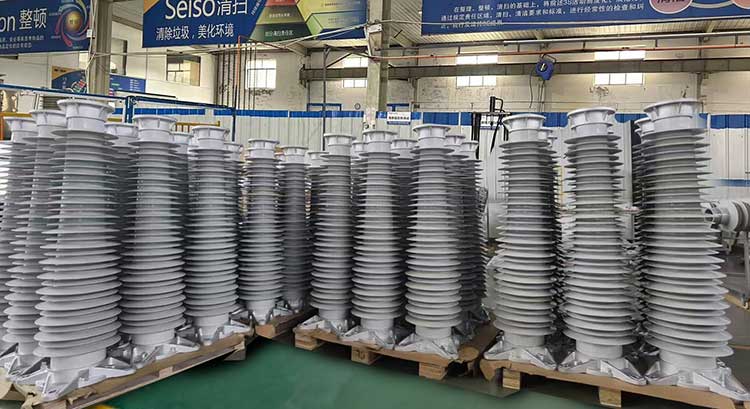
Transformer Bushing Types
- High Voltage Bushing
Usually, the high-voltage bushing is connected to the high side of the transformer winding which goes outside of the transformer through the power grid. It has a high insulation level and can be subjected to a strong voltage stress and high-temperature environment. Composite materials are used largely for their high resistance to pollution and aging, excellent long-term operation in outdoor environments, and stable high-voltage output.
- Low Voltage Bushing
Low voltage bushing is at the low voltage end of the transformer to transfer power from the low voltage winding of the transformer to the power supply bus or other loads. The limitation of the insulation requirement of low voltage bushing is that it has a relatively low voltage level, and the insulation requirement of the high voltage bushing is much higher. Nevertheless, it still requires high mechanical strength and environmental resistance for long-term operation.
- Neutral Bushing
The neutral bushing is ground-connected to the neutral point of the transformer and is usually used to ground the neutral point. Mainly it is to make a path for current flowing to the ground, to permit such a current to exit safely in the case of a fault, and to protect the transformer equipment and safety of the power grid to export current to the ground. Usually, lightweight, impact-resistant composite neutral point bushings are suitable for a variety of harsh outdoor conditions.
- Tap Changer Bushing
It connects the tap changer of the transformer to the output voltage and is called the tap changer bushing. To accommodate the variation of different voltage values during the voltage regulation, the bushing design must fulfill the requirements of multiple voltage levels. The composite switching bushing has good resistance to mechanical stress under voltage regulation and can frequently accommodate switching operations.
- Transition Bushing
The function of the transition bushing is to attach different windings of the transformer and to act as an electric isolation and mechanical support. Since the transition bushing is located in the transformer, it is designed with less concern about the high voltage insulation performance and its high-temperature resistance for safe electric isolation of different levels of wind.
Why do we use bushing in transformers?
- Insulation:
The bushings are used to provide electrical insulation between high voltage conductors to grounded metal parts inside the transformer like the transformer tank. Short circuits are prevented and ensure safe operation of the transformer is by isolating the internal high-voltage components from the external environment.
- Current Transfer:
The windings on the inside of the transformer are allowed to transfer current to the entire grid. As a conduit for the current they effectively perform.
- Mechanical Support:
They are also used to transmit electrical power from the transformer through the conductors to the external power lines and perform a mechanical function, in supporting the conductors. It maintains the alignment and stability of the electrical ward.
- Voltage Stress Control:
The design is to deal with and distribute voltage stresses on their surface. That helps to maintain voltage levels within safe limits and reduces the chance of arcs or breakdowns.
- Protection from External Factors:
These bushings protect the transformer from hostile environmental factors, dirt, moisture, and physical harm. Lastly, the outer material of the bushing is usually porcelain or composite, such that the internal components of the bushing are not affected in any way by these factors.
Certificate

Factory

Hot Tags: Power Transformer Bushing, Bushing, Thailand, manufacturers, ISO factory, wholesale, KEMA, high quantity, best, price, low to high voltage






